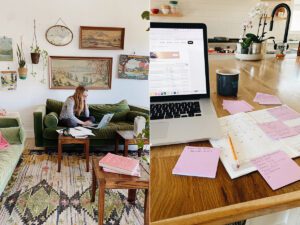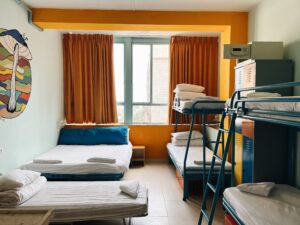Israeli/Palestinian Dual Narrative Tour {Abraham Tours}
I’m sitting in a cute boho style cafe. The wind is blowing off the Sea of Aqaba through the open windows tangling my hair in a million ways. I might have pretty cool dreads at the end of this trip. We’ve been gone almost exactly 5 months now. My posting has been regulated to Instagram, but Breese is encouraging me to share longer here. Maybe I will have the kids give updates on the trip from their perspectives – that was Breese’s idea. Its a good one.
This trip had many goals. I need to share them, but that is another long post! Among the many desires of my heart was for my children to broaden their perspectives of the world. For them to understand there is a very big difference in what the news portrays and what actually happens in the world. I wanted them to experience first hand that an entire country or people cannot be summed up in a headline, social media post, or the opinions of a loud small group of people.
Nearly a year ago I was researching all the possible options for this trip – just beginning to narrow down our travel path. I came across an an article by Rick Steves about how he visited Hebron (West Bank) and did a tour that included time with an Israeli guide and a Palestinian guide. I knew if we made it to Israel, I wanted to visit Palestine with my family and learn in a similar way. After digging around I found the Dual Narrative tour offered by Abraham Tours and then planned our time in Israel to include it. And that is where I am going to jump back into blogging because a tour like this can’t really be explained or described in an instagram caption.
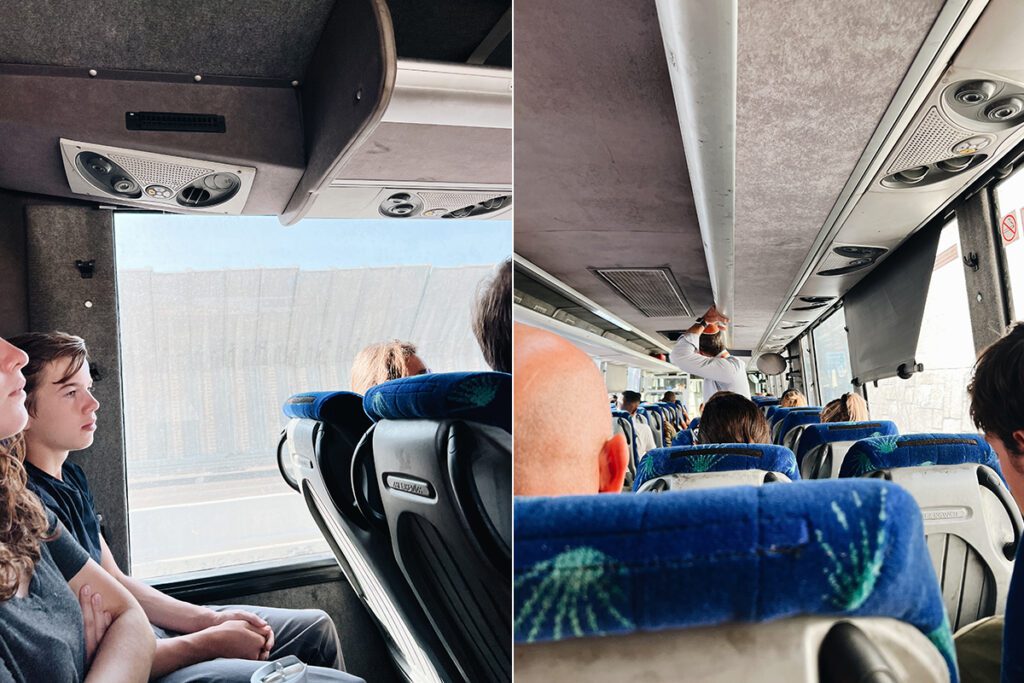
Along with about 10 others and a Jewish guide we boarded a bus in Jerusalem and began the journey to Hebron. From the window we could see the Israeli West Bank barrier wall. Our guide described it as necessary and began listing the reasons he viewed it as essential. He listed numbers and stats and what he said made sense, but then he began making generalizations about all Palestinians. My kids looked my direction as harsh words were spoken about what Palestinian kids are taught and how they are loved in comparison to Israeli kids. And that is the moment – only 5 minutes into the tour – we realized this was definitely a tour of narratives and how one sees the world not one based on hard facts. Two weeks before in Jordan we sat with a Palestinian father of 5 who was born in the West Bank. The words of my Jewish guide on that bus were very much not true of every Palestinian.
We arrived in Hebron and were given a brief summary of the different areas of the city and the controlling parties.
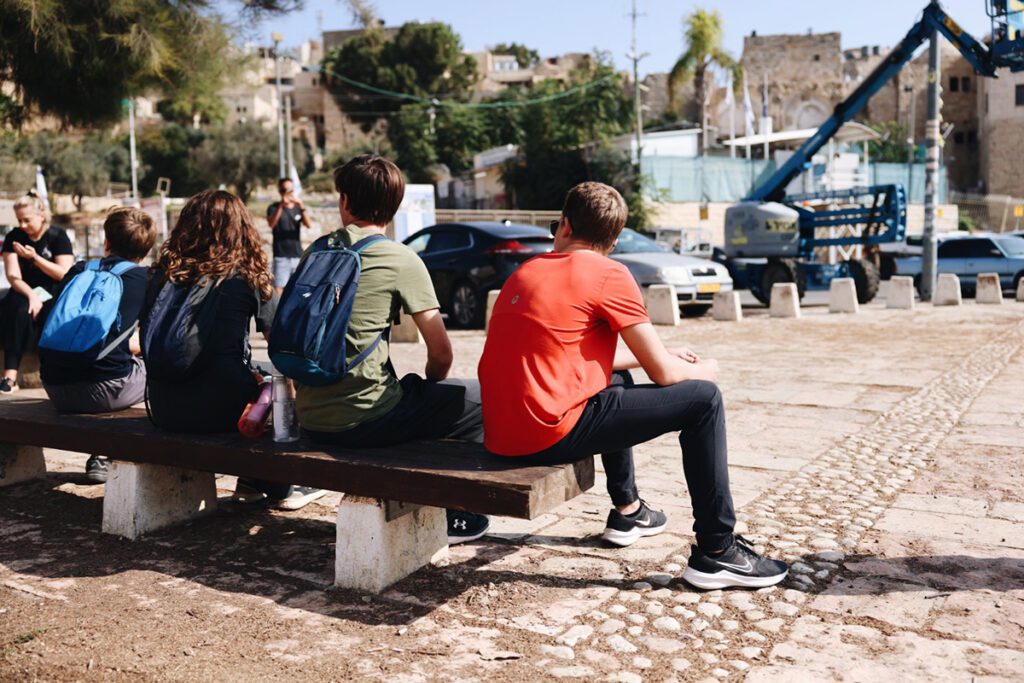
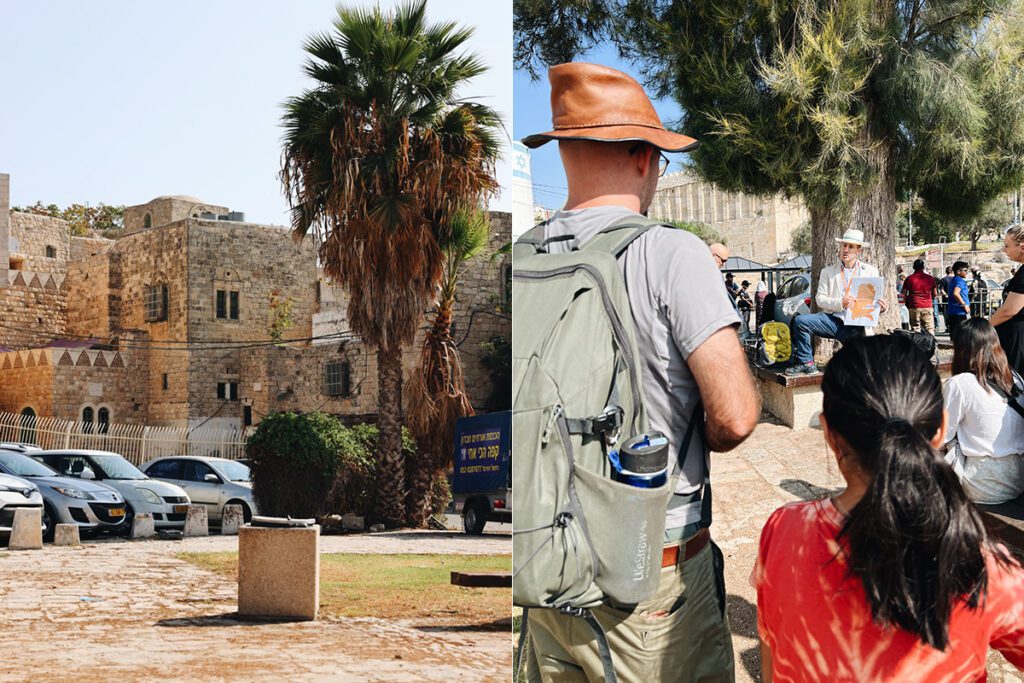
After the quick explanation we were introduced to our Palestinian guide and headed off to the Tomb of the Patriarchs. In the center of the old city of Hebron this site is the burial location of Abraham, Sarah, Isaac, Rebecca, Jacob and Leah. It is a sacred and holy site for Islam and Judaism. It is also bears the scars of centuries of bloodshed, turmoil, and deep division. With bulletproof glass and bars dividing the building in half (one side for Jews to worship, one side for Muslims) it highlights the many reasons peace is elusive here. The history of this location is far to great for me to share, I encourage you to research it.
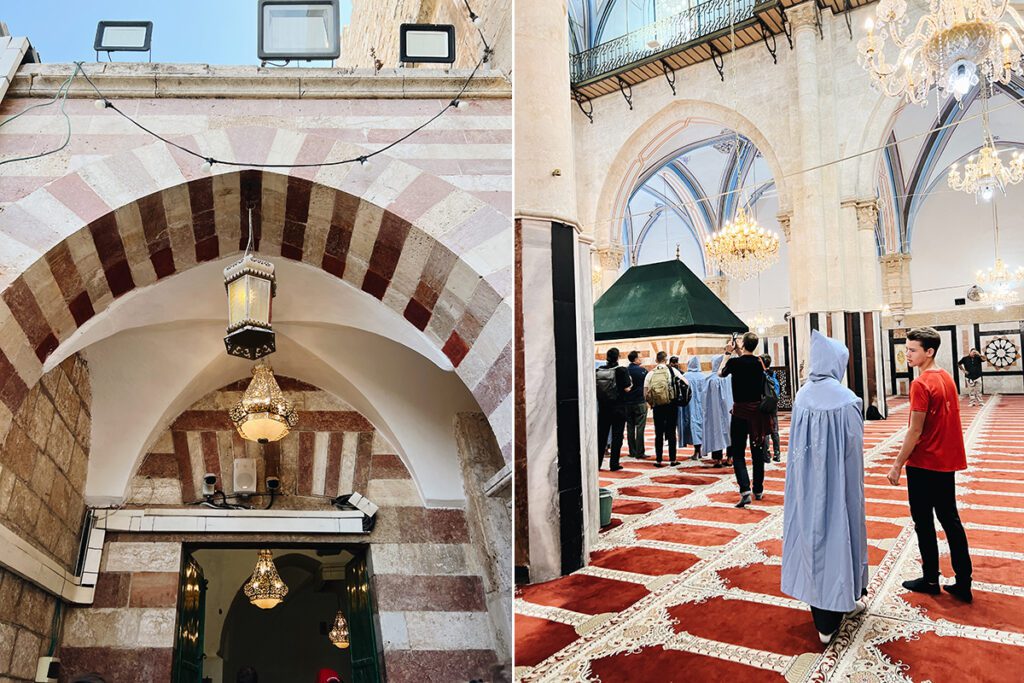
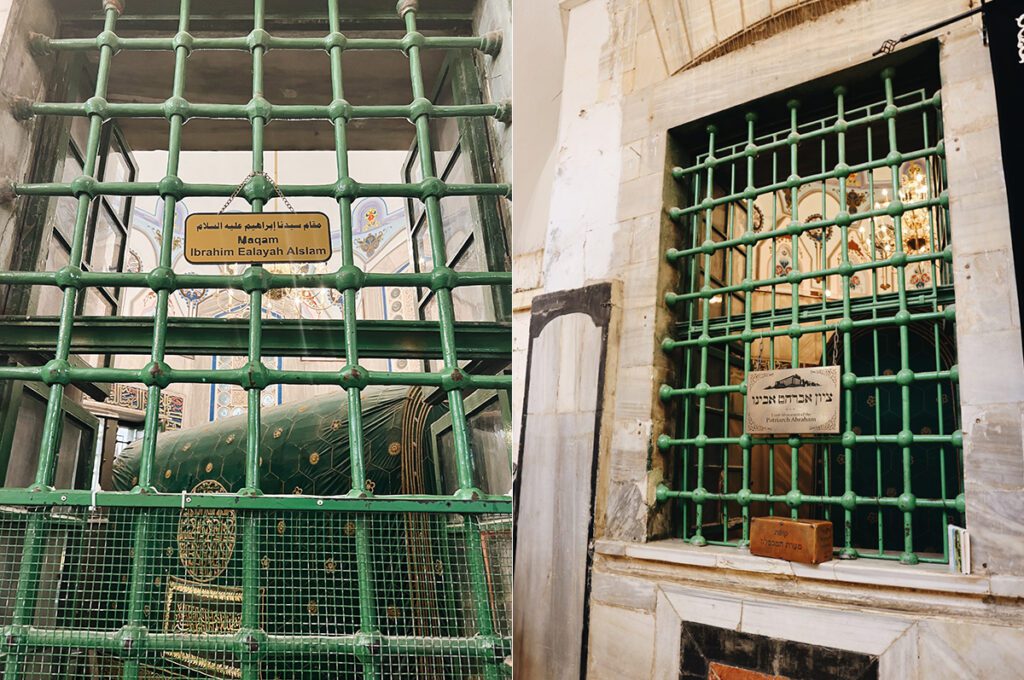
From there we walked the Palestinian markets in the old city,
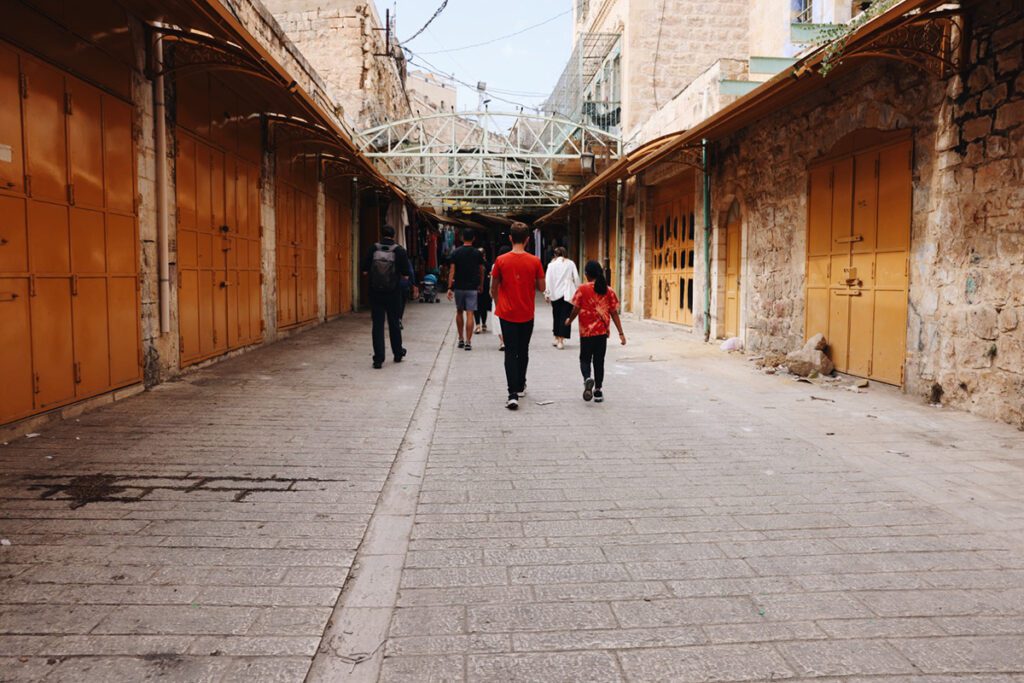
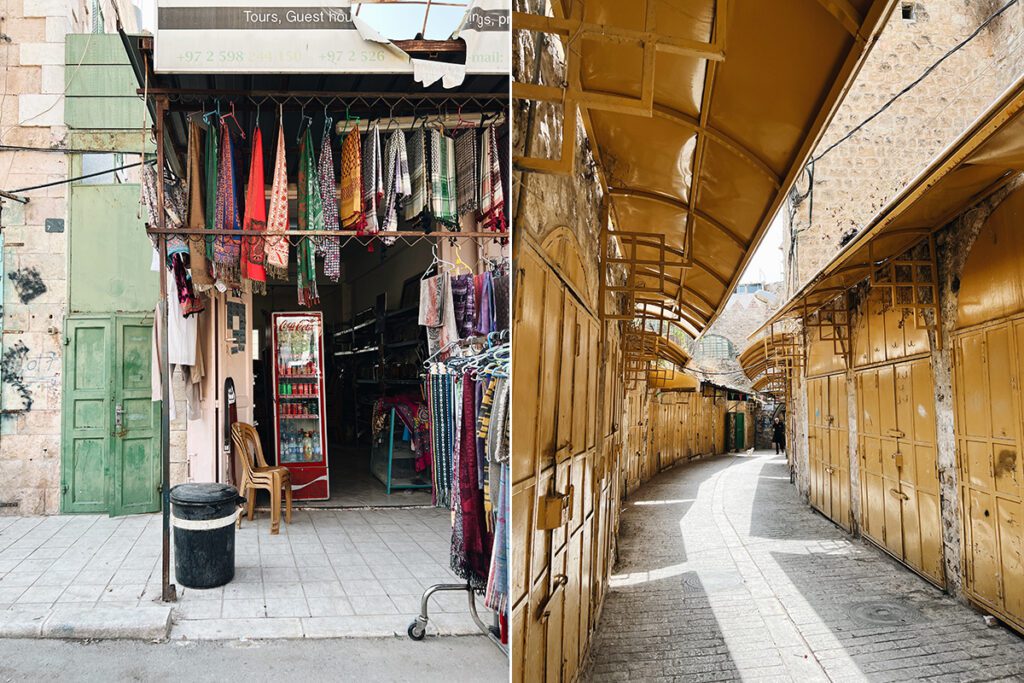
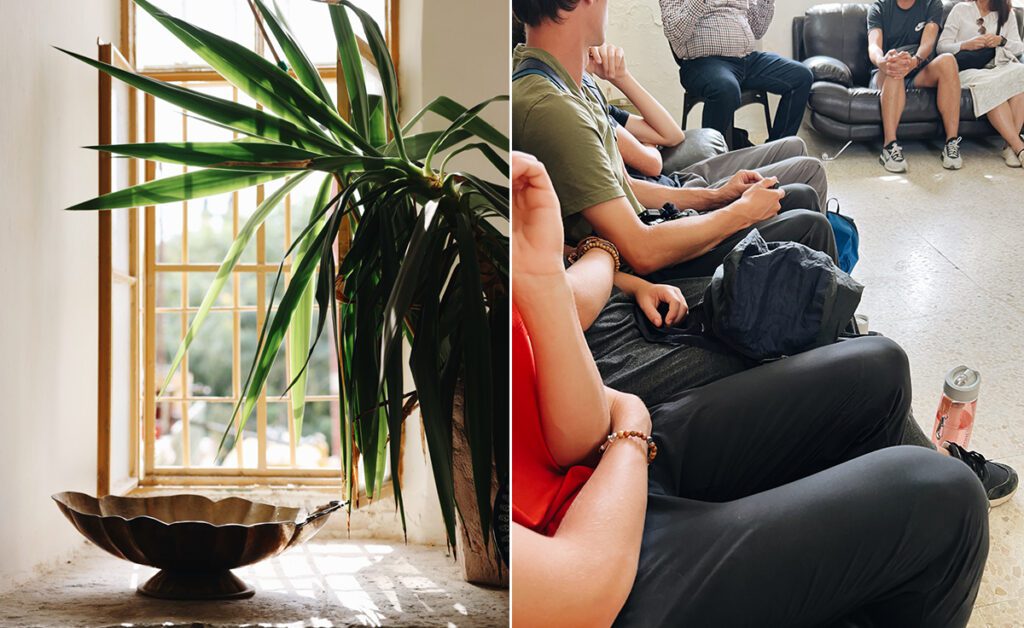
We ate lunch with our Palestinian guide in his home and sat around his table as he shared stories of the shuttered stores, the dislocated families, and his perspective of a conflict with land at the heart of it. He is the 6th generation of his family to live in his home. Behind where I sat was the room he was born in. He never spoke ill of Jews or Israel in general, only his concern for his people, the loss of homes and what he saw as colonization. That huge border wall we passed on the bus was seen as necessary against terrorism by our Jewish guide and was a picture of racial segregation and apartheid to our Palestinian guide. Very different narratives based on very different experiences in the same land.
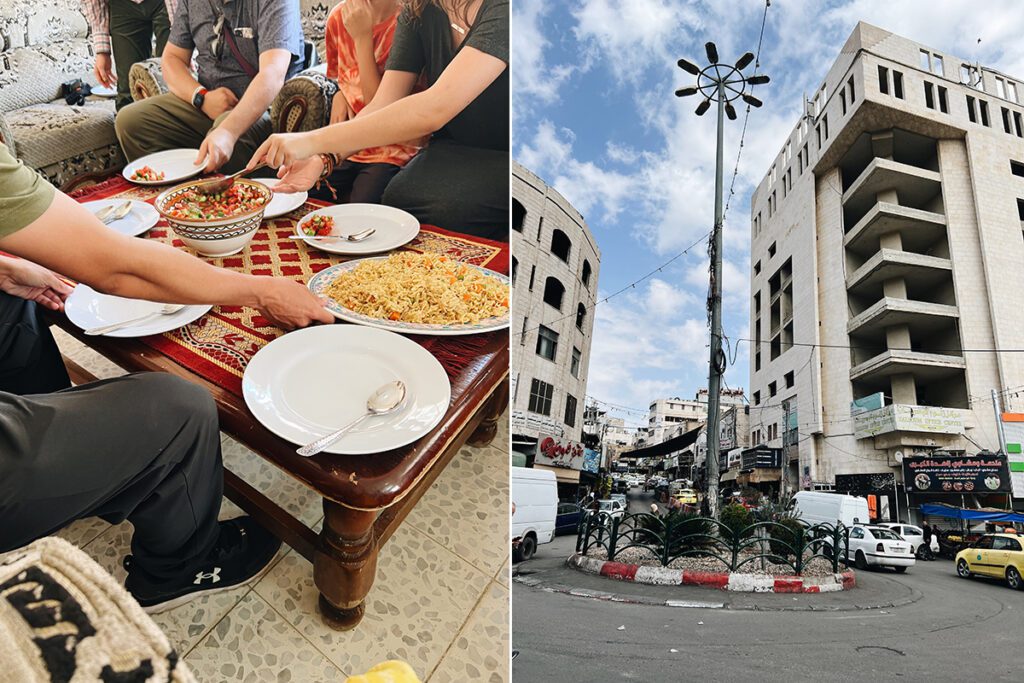
As we wrapped up our time with our Palestinian guide we wandered the markets once more. Warm shouts of “Welcome!” greeted us and we bought the best baklava from a young girl and her father. I’ll be thinking about that baklava and the little girl for a very long time.
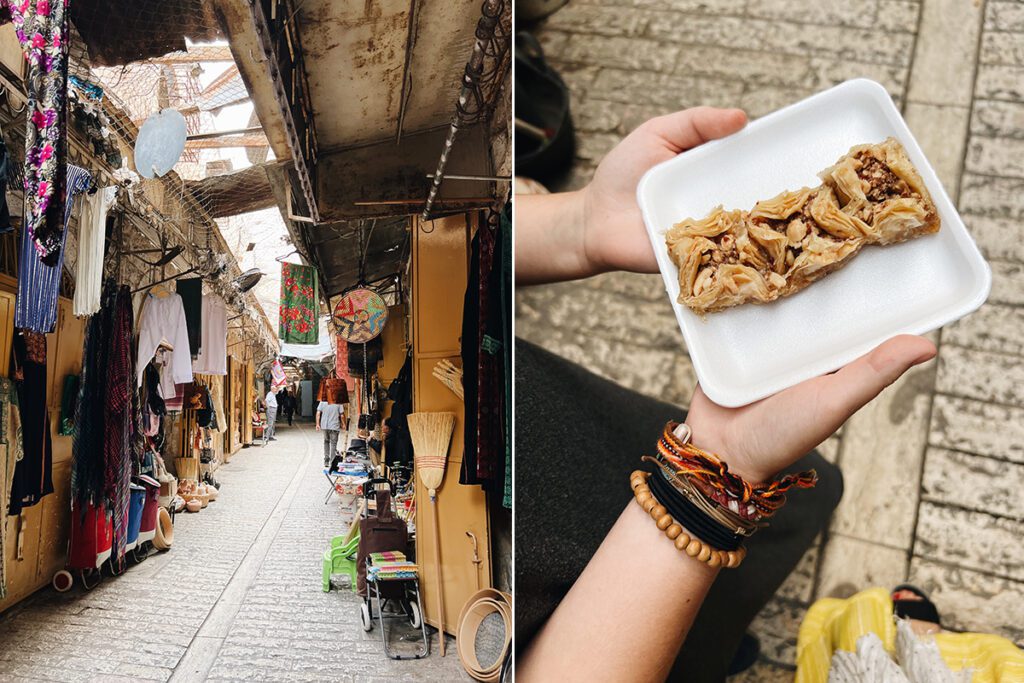
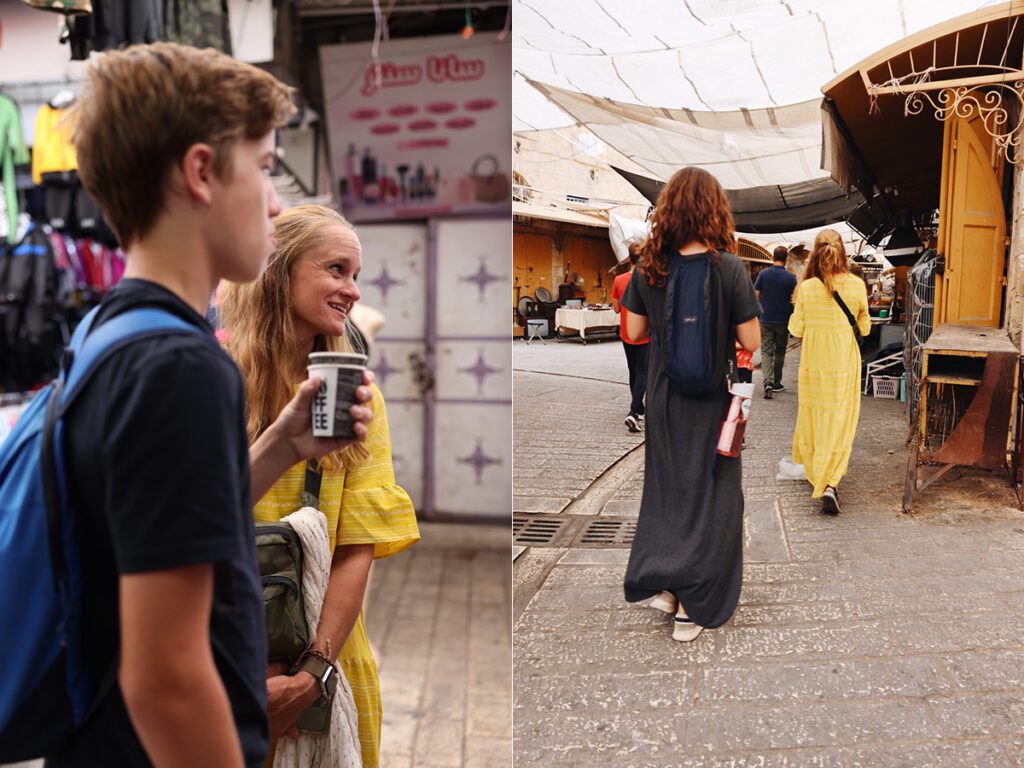
After saying ‘goodbye’ we returned to meet back up with our Jewish guide and return to the Cave of the Patriarchs. We walked back through on the Jewish side – peering through the glass to see Muslims praying on the other side. We asked questions about what we had heard from our Palestinian guide and tried to make sense of the very contradictory things spoken. We spent time with Jewish settlers and learned about their longing to live out their faith and lives free from persecution. My heart ached at the collective pain they’ve felt as a people. For centuries they’ve endured tremendous pain and loss. We sat in a rebuilt synagogue and listened as they recounted stories of deep suffering, being dispersed around the world and their feelings of profound attachment to the land.
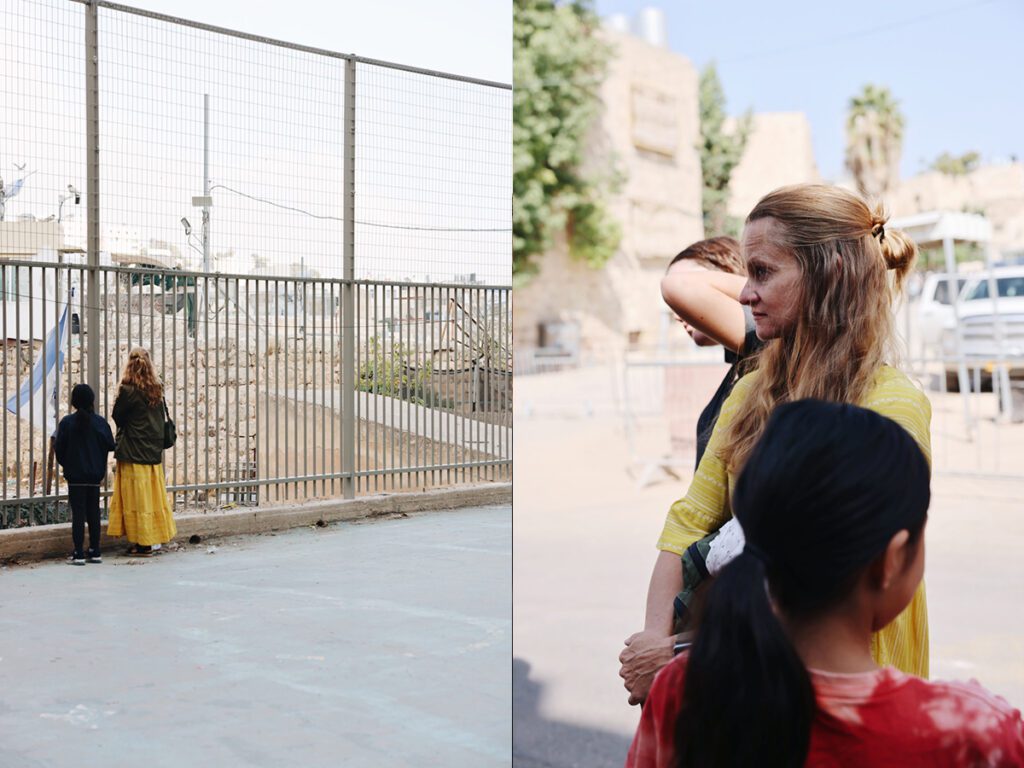
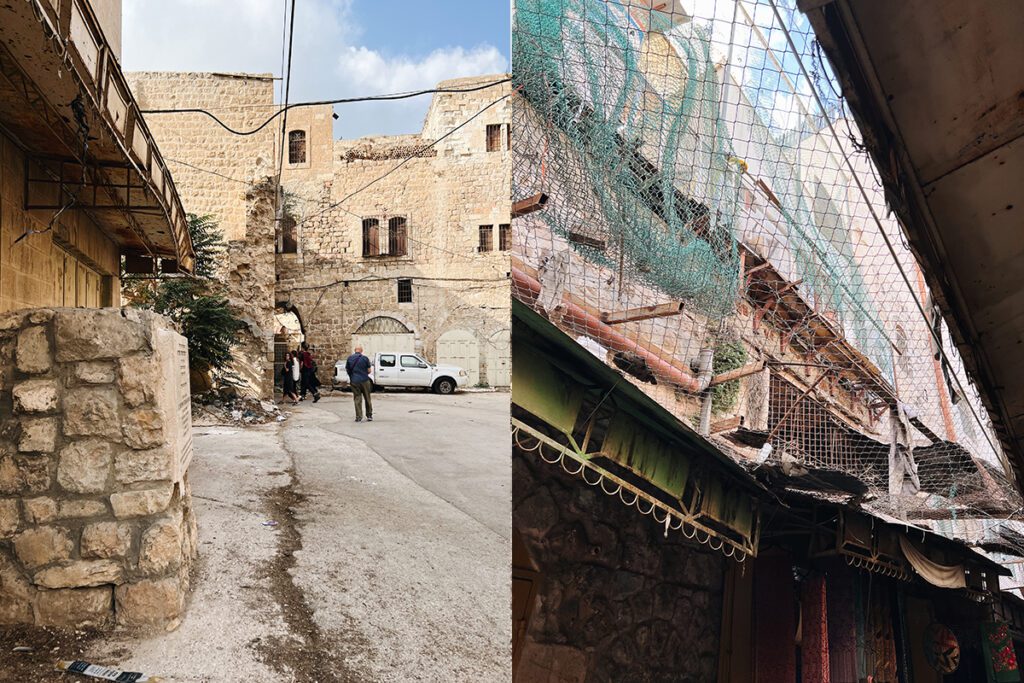
While with our Palestinian guide we walked a market covered in netting (above R photo). He described it as a necessary to prevent trash thrown down by settlers. With our Jewish guide we walked on the outside of that same market street and he pointed out a memorial for a Jewish citizen (above L photo).
Breese leaned over to me and said, “At this point I have no idea what to think.” I nodded in agreement.
Prior to this day what I knew and understood about the Israeli/Palestinian conflict was based on very limited and often biased sources. An article on an American website is very different than walking the streets and talking to the people that live here. I tell my kids all the time that there are always 2 sides to a story and usually much more than 2. I encourage them to seek out information from first-hand sources and to understand that even the same event can be seen in starkly different ways. Our time in Hebron verified that in a heartbreaking way.

My guys have spent a few years studying debate and recognizing fallacies in arguments. They peppered our guides with questions and challenged what they saw as ad hominem (personal attacks instead of logic), strawman arguments, false dichotomies (a focus on only 2 extremes), slippery slopes, and red herrings (distracting from topic). My kids didn’t sit back, but engaged fully and walked away changed in many ways. Lessons learned that apply not just to understanding world conflict, but personal ones as well.
At the end of the day not only did we recognize two very different narratives, we also realized our Jewish guide’s thoughts did not reflect every Jewish or Israeli citizen. Our Palestinan guide was not a reflection of every Palestinian citizen. They were two men willing to share their voices and perspectives and we were grateful for seats at their tables.
In Hebrew, “Hebron” means a place of joining, an alliance. Walking the city one feels it means the opposite. I don’t know the solution – it does feel hopeless in many ways because the narratives are so starkly different and too often marked by extremes of fear and hate. As we departed the city a dark and heavy cloud settled over it…symbolic very much of how it felt as one who has made both Israeli and Palestinian friends and longs for peace, justice, and happiness for both.
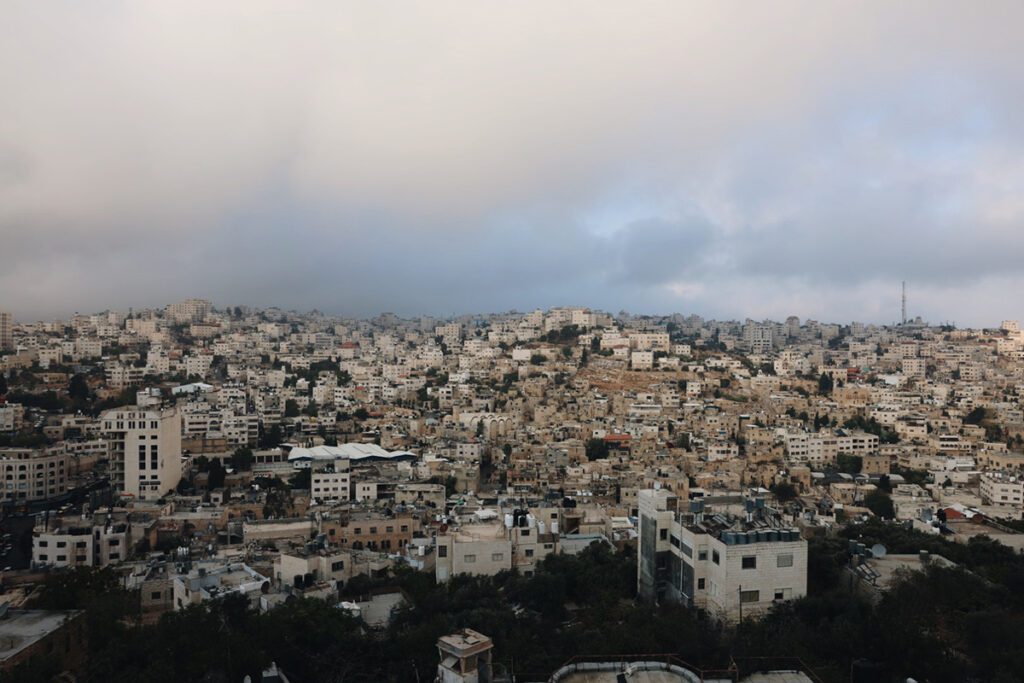
Click here for more information about Abraham Tours Dual Narrative Tour
*I have Israeli, Palestinian, Jewish, and Muslim friends, if hateful comments are they will be deleted.

